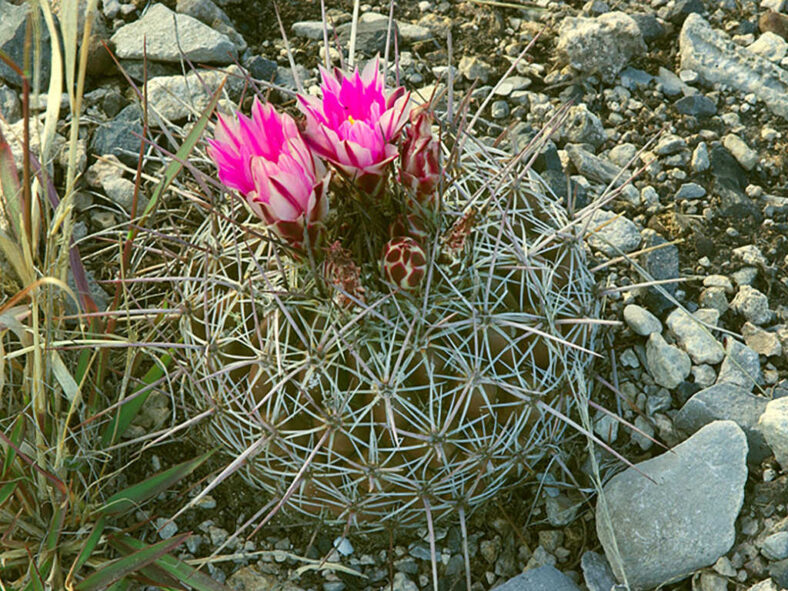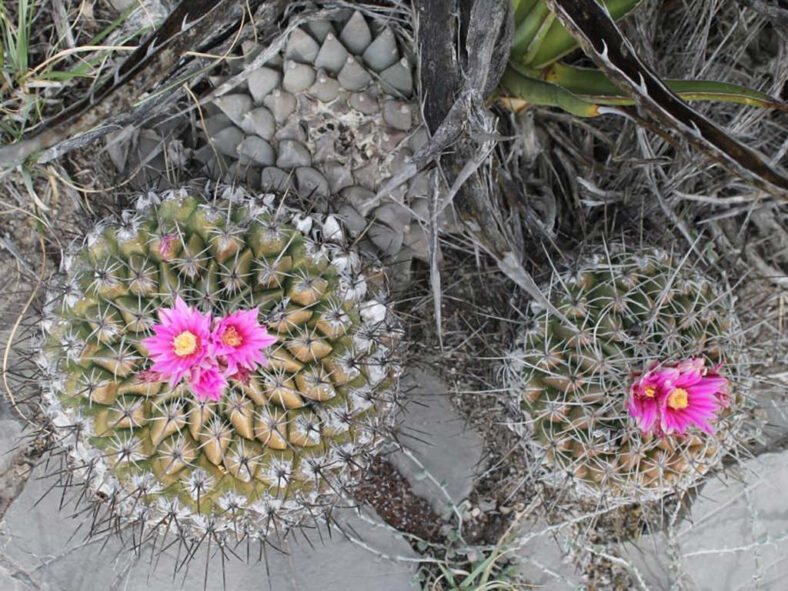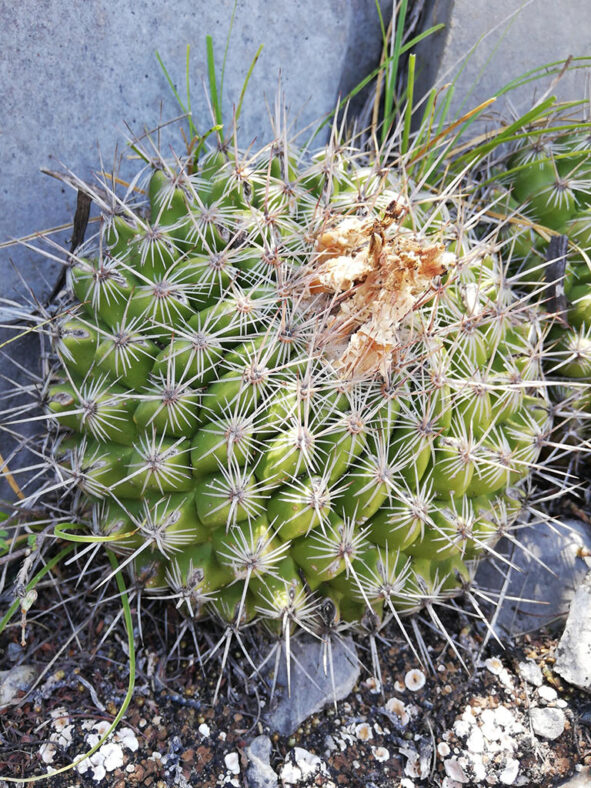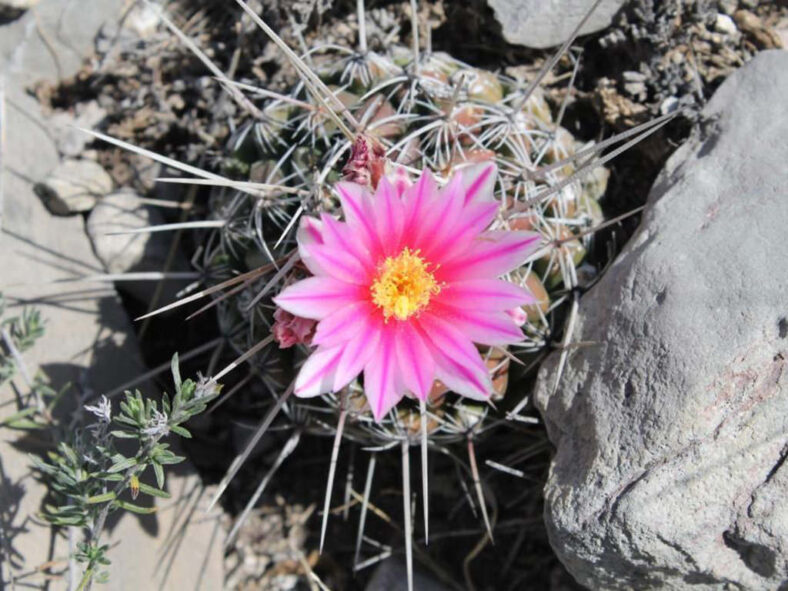Thelocactus conothelos was first described by Eduard von Regel and Eduard Klein in 1860 as Echinocactus conothelos. In 1936, Frederik Marcus Knuth reclassified it as Thelocactus.
Scientific Name
Thelocactus conothelos (Regel & E.Klein bis) F.M.Knuth
Synonym(s)
Echinocactus conothelos, Gymnocactus conothelos, Thelocactus conothelos subsp. conothelos, Torreycactus conothelos
Scientific Classification
Family: Cactaceae
Subfamily: Cactoideae
Tribe: Cacteae
Genus: Thelocactus
Etymology
The specific epithet "conothelos" (pronounced "kon-oh-THEL-os") means "having conical nipples" and refers to the conical tubercles on the stems of this species.
Origin
Thelocactus conothelos is native to Mexico. It occurs in Nuevo León, Tamaulipas, and San Luis Potosí at elevations that range from 3,940 to 7,220 feet (1,200 to 2,200 m), where it grows in shrubland and limestone slopes. This species has four subspecies, with Thelocactus conothelos subsp. conothelos being found in northeastern Mexico.
Description
Thelocactus conothelos is a small cactus with a solitary, ovoid to short cylindrical stem covered with conical tubercles joined into indistinct, spirally arranged ribs. The stem can grow up to 12 inches (30 cm) tall and 6 inches (15 cm) in diameter. The areoles are woolly, particularly during the juvenile phase, and typically bear between 8 and 20 radial spines that can reach lengths of up to 0.8 inches (2 cm) and 2 to 4 central spines that can grow up to 2 inches (5 cm) long. The radial spines are gray to ochre, while the central spines are generally ochre but may turn grayish with age.
From late winter to early spring, Thelocactus conothelos produces funnel-form flowers that range in color from white to magenta. They appear at the tip of the stem and can have a diameter of up to 2.4 inches (6 cm). The fruits are spherical, covered with scales, and contain black, pear-shaped seeds. They can grow to about 0.6 inches (1.5 cm) in diameter.

How to Grow and Care for Thelocactus conothelos
Light: Thelocactus conothelos thrives in full sun. When grown indoors, it performs best in a very sunny window.
Soil: Use a commercial soil mix specifically designed for cacti, or create your own to ensure good root aeration and drainage.
Temperature: While this cactus can tolerate short periods of freezing temperatures, it is best not to expose this cactus to temperatures much below 32 °F (0 °C), especially in high humidity. Thelocactus conothelos grows best in USDA Plant Hardiness Zones 9a to 11b, with average minimum winter temperatures ranging from 20 to 50 °F (-6.7 to 10 °C).
Watering: Regular watering is required during the growing season. Water deeply and allow the soil to dry out completely before watering again. Stop watering during the winter when the plant goes dormant.
Fertilizing: Thelocactus conothelos benefits from fertilizing during the growing season. Use a water-soluble fertilizer and refrain from feeding during winter.
Repotting: This cactus should be repotted into a slightly larger pot with drainage holes every two or three years, preferably at the beginning of the growing season. However, if necessary, repotting can be done at any time of the year.
Propagation: Since Thelocactus conothelos rarely produces offsets, it is typically propagated from seeds. Sow seeds in late spring or summer for the best results.
Learn more at How to Grow and Care for Echinocactus.
Toxicity of Thelocactus conothelos
Thelocactus conothelos is non-toxic to humans or pets. However, it has sharp spines, so keep it away from pets and children.
Links
- Back to genus Thelocactus
- Succupedia: Browse succulents by Scientific Name, Common Name, Genus, Family, USDA Hardiness Zone, Origin, or cacti by Genus
Photo Gallery
Click on a photo to see a larger version.


